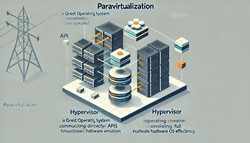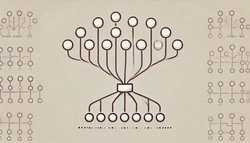Database Partitioning

(Representational Image | Source: Dall-E)
Quick Navigation:
- Database Partitioning Definition
- Database Partitioning Explained Easy
- Database Partitioning Origin
- Database Partitioning Etymology
- Database Partitioning Usage Trends
- Database Partitioning Usage
- Database Partitioning Examples in Context
- Database Partitioning FAQ
- Database Partitioning Related Words
Database Partitioning Definition
Database partitioning is a technique used to improve the performance, scalability, and manageability of databases by dividing a large dataset into smaller, more manageable parts, called partitions. These partitions can be stored on different physical or logical storage units, helping to distribute workload and optimize query performance. There are different types of partitioning, such as range partitioning, list partitioning, hash partitioning, and composite partitioning, each with its own method of segmenting data.
Database Partitioning Explained Easy
Imagine you have a huge bookshelf filled with books. Finding a book in a messy pile is hard, but if you organize books into separate labeled shelves (fiction, history, science), it’s much easier to find what you need. Database partitioning works the same way—data is broken into smaller, labeled sections, making it easier to search and manage.
Database Partitioning Origin
Database partitioning became more relevant in the late 20th century as databases grew in size and complexity. The rise of distributed computing and cloud storage further increased the need for effective partitioning strategies to handle vast amounts of data efficiently.
Database Partitioning Etymology
The word "partitioning" comes from the Latin “partitio,” meaning “division” or “separation.” In the context of databases, it refers to the structured division of data into distinct segments.
Database Partitioning Usage Trends
With the rise of big data, database partitioning has become a crucial strategy for improving query performance and managing large-scale applications. Industries such as finance, e-commerce, and telecommunications rely on partitioning to handle real-time transactions and analytics. Cloud-based solutions like Amazon RDS and Google Cloud Spanner implement automatic partitioning for scalability.
Database Partitioning Usage
- Formal/Technical Tagging:
- Database Management
- Data Storage Optimization
- Big Data Architecture - Typical Collocations:
- "range partitioning in SQL"
- "database partitioning strategy"
- "partitioned tables for scalability"
- "hash partitioning performance boost"
Database Partitioning Examples in Context
- A large e-commerce website partitions its customer order data by date to speed up search queries for recent orders.
- A multinational company partitions its employee database by geographic region to distribute workloads across servers.
- A financial institution uses hash partitioning to evenly distribute transaction records and prevent performance bottlenecks.
Database Partitioning FAQ
- What is database partitioning?
Database partitioning is a method of dividing large datasets into smaller, more manageable segments to improve performance and organization. - What are the types of database partitioning?
The common types include range partitioning, list partitioning, hash partitioning, and composite partitioning. - Why is database partitioning used?
It enhances query performance, reduces maintenance overhead, and enables better workload distribution across storage systems. - What is the difference between horizontal and vertical partitioning?
Horizontal partitioning splits data rows into separate partitions, while vertical partitioning divides columns across different storage units. - Which industries use database partitioning?
Industries such as finance, healthcare, telecommunications, and e-commerce rely on database partitioning for large-scale data management. - How does range partitioning work?
Range partitioning assigns data to partitions based on a range of values, such as dates or numerical IDs. - What is hash partitioning?
Hash partitioning distributes data evenly across partitions based on a hash function applied to key values. - Is database partitioning only for SQL databases?
No, both SQL and NoSQL databases use partitioning to optimize data storage and retrieval. - What are the drawbacks of database partitioning?
It adds complexity to database management and may introduce challenges in query optimization and partition pruning. - Can partitioning improve query performance?
Yes, by reducing the amount of data scanned for queries, partitioning significantly improves performance.
Database Partitioning Related Words
- Categories/Topics:
- Data Management
- Distributed Systems
- Query Optimization
Did you know?
Database partitioning plays a key role in cloud computing and large-scale data processing. Services like Amazon Redshift, Google BigQuery, and Apache Cassandra use partitioning to distribute workloads efficiently, reducing response times for billions of transactions per day.
Authors | Arjun Vishnu | @ArjunAndVishnu

PicDictionary.com is an online dictionary in pictures. If you have questions or suggestions, please reach out to us on WhatsApp or Twitter.
I am Vishnu. I like AI, Linux, Single Board Computers, and Cloud Computing. I create the web & video content, and I also write for popular websites.
My younger brother, Arjun handles image & video editing. Together, we run a YouTube Channel that's focused on reviewing gadgets and explaining technology.
















Comments (0)
Comments powered by CComment